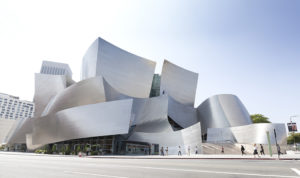Famous concert halls inspire and delight the senses while music lovers enjoy the great musical ensembles of the world. That said, one does not need to be interested in music to seek out the wonders of these edifices. Just the architecture and construction of these buildings are of interest to many people. The acoustical properties of these great halls interest sound engineers, designers, and acoustical physicists, among others.
The world famous Carnegie Hall in New York City, was finished in 1890 and was financed by philanthropist, Andrew Carnegie. It has an enviable history of performers and world premiere performances. One of the most memorable moments at Carnegie Hall was Russian composer Peter Tchaikovsky conducting the opening concerts in 1891.
The Metropolitan Opera House in New York City, is also internationally known. It was built by businessmen who wanted an opera house. In 1995 a unique technological improvement was added to the back of the seats. They display the translation of the libretto (lyrics) while they are being performed on the stage. It is a very large house seating over 4000, plus standing room. The Metropolitan Opera Company is one of the foremost and acclaimed in the entire world.
Radio City Music Hall in New York City is not just a concert hall but an entertainment center for all forms of the performing arts. The stage and movable platforms are hydraulically operated with many configurations possible. These inventions were well ahead of their time. During World War II the Federal Bureau of Investigation (FBI) had guards under the stage where the machinery was housed, 24 hours a day. They were fearful of sabotage by enemies of the United States. The Rockettes, the music hall’s famous dance troupe, presents outstanding Christmas shows there, like no other, each December.
Boston Symphony Hall in Boston, Massachusetts was built in 1900 and is known worldwide for being one of the important venues for classical music. Similar to a shoebox it is rectangular in shape. This style was originally found in Leipzig, Germany in the Gewandhaus. The acoustics are the result of physics professor from Harvard University, Wallace Clement Sabine. He carried out experiments to understand how room environments affect sound. The hall accommodates both the Boston Symphony and the Boston Pops Orchestra. It is said to be the first hall built using scientific acoustical principles.
Walt Disney Concert Hall in downtown Los Angeles is one of the newest world class modern
concert halls. Designed by Frank Gehry, it is acclaimed for its superior acoustics and distinctive architecture. The Los Angeles Philharmonic Orchestra calls the hall home.
Royal Albert Hall in London, England was opened by Queen Victoria in 1871, named in honor of her husband, Prince Albert. It is London’s most iconic venue and home to the “Proms Concerts” dating back to 1895. This series of summer concerts last over eight weeks. They are some of the most famous classical music concerts associated with the hall.
Bridgewater Hall in Manchester, England, is a fairly new hall dating from 1996. It is a completely silent hall allowing for very quiet playing yet the music still can be heard. In 1996 an IRA bomb exploded nearby and no one inside the hall heard the explosion because of the superior construction materials and building techniques.
The Grosser Musik Vereinssaal in Vienna, Austria is often hailed as the best concert hall in the world. The sound seems to be coming from all directions. It is known as the “Golden Sound in the Golden Hall.” The Vienna Philharmonic, The Vienna State Opera and the Vienna Konzer Haus, all call it home, thus making Vienna a leading venue for classical music.
The Culture and Congress Centre Concert Hall in Lucerne, Switzerland has a reverberation chamber that wraps around the outside of the hall. The acoustics can be changed to accommodate not only classical but other types of musical shows.
The Berlin Philharmonie in Berlin, Germany opened in 1963. It has a tent-like exterior noted for its advanced acoustics. The seating is called vineyard terracing. The technician breaks the seating in blocks. The hall is representative of music-in-the-round where some of the audience sits behind the orchestra.
Philharmonie de Paris in Paris, France is not the every-day rectangular or squarish concert hall. It is almost impossible to see a straight line. The eye sees almost nothing but curves. All the shapes and curves are designed for maximum acoustical excellence. It is a hallmark, state-of-the art sound engineering phenomenon. It also boasts a museum of musical history from the 17th century to the present.
Sydney Opera House in Sydney, Australia opened in 1973. It is recognized as one of the most famous and iconic structures in the world. This concert hall is one of the most photographed buildings by tourists and locals alike. Of the 233 designs submitted, the one chosen was by Scandinavian designer, Jorn Utzon. In 2003 he was named Pritvker Prize Laureate. The building is actually a complex of venues including a concert hall and several theaters.
The Hungarian State Opera House in Budapest, Hungary, was built between 1875 and 1884. It is a good example of Neo-Renaissance architecture and design. Due to its ornate decoration, it is one of the world’s most beautiful halls.
Christ Church Town Hall Auditorium in New Zealand has a unique interior design. The acoustics in this hall are reflected from the walls to the sides of the heads of the audience. To enhance the acoustics, wooden panels form a large tent-like structure, resembling a tepee hanging over the audience.
La Scala in Milan, Italy is an important venue in the world of opera. This large structure holds 2,030 people and was constructed in 1778. In 1943 during World War II it was badly damaged by bombing. La Scala is considered a musical mecca with its many crystal chandeliers and gorgeous decorations. It has a museum and offers tours of the opera house; even during rehearsals of great performers and renowned conductors.
Davies Symphony Hall in San Francisco was completed in 1980 for the San Francisco Symphony. Before it was built, the Symphony shared space in the Opera house with the San Francisco Opera and San Francisco Ballet. It has the capacity to play repertory from Pre-Baroque to the present day. The acoustics can be altered by convex acrylic panels over the stage suspended from the ceiling. The famous Fratelli Ruffatti organ was added in 1984.
These notable halls are only a few of the fine concert halls of the world. Every large city can boast of their venues with pride and passion.
Some of the research of the above was by Trevor Cox of The Guardian.
Please submit your questions and comments to banddirector01@comcast.net
Visit our website at www.danvilleband.org for up-to-date information about the Danville Community Band.









